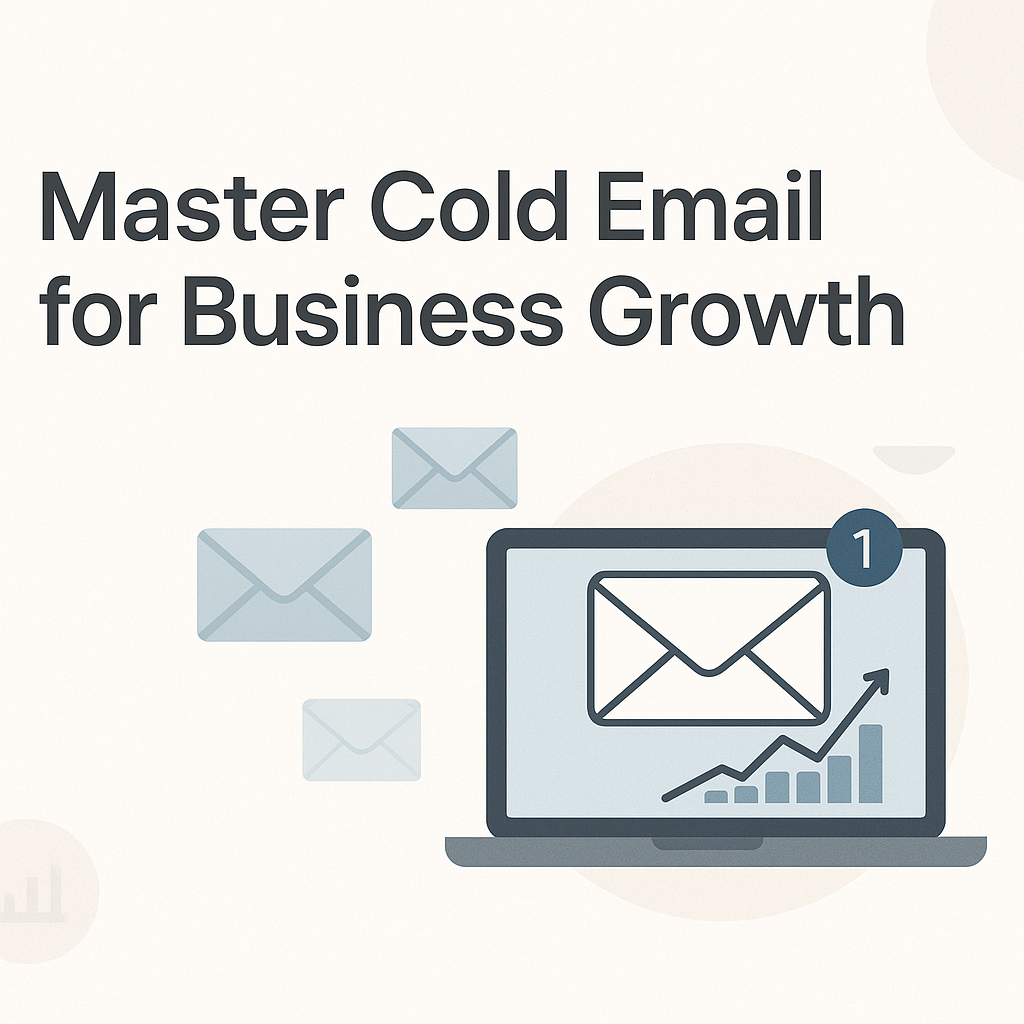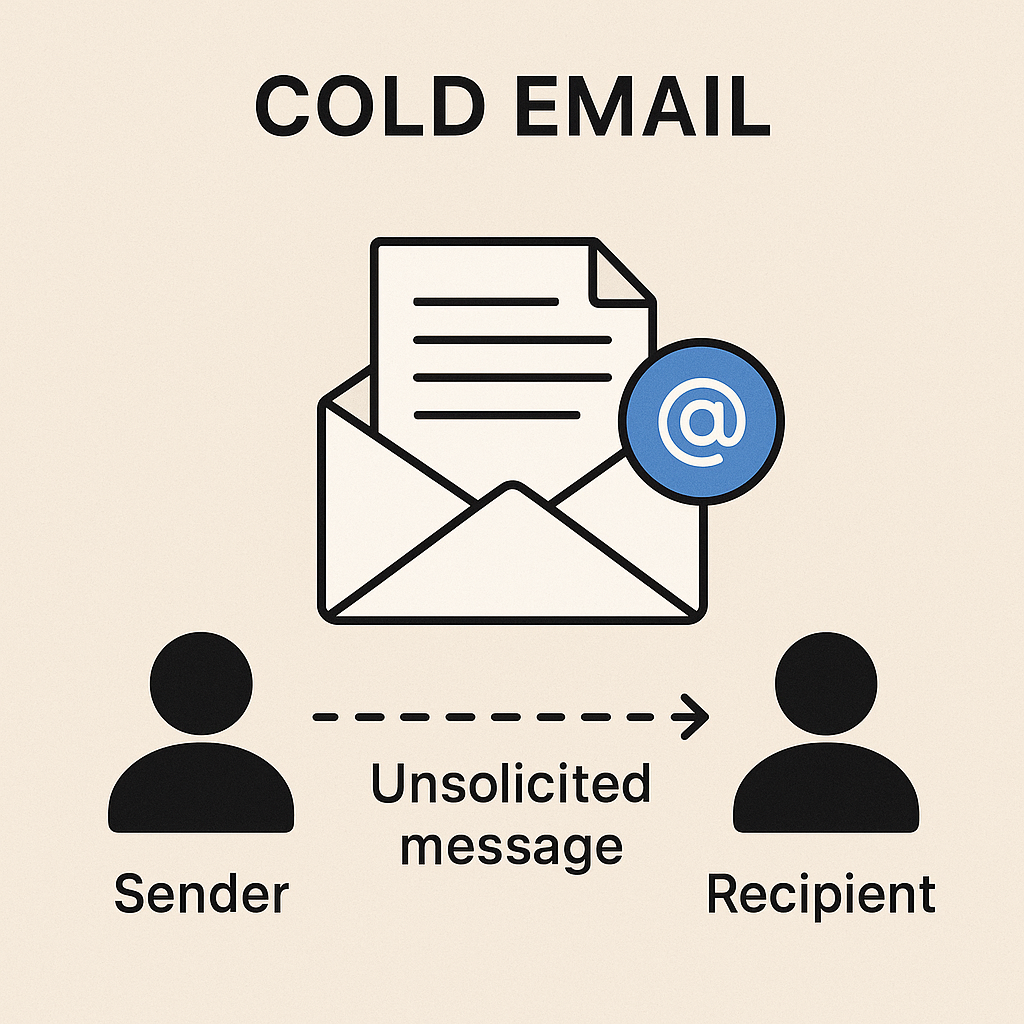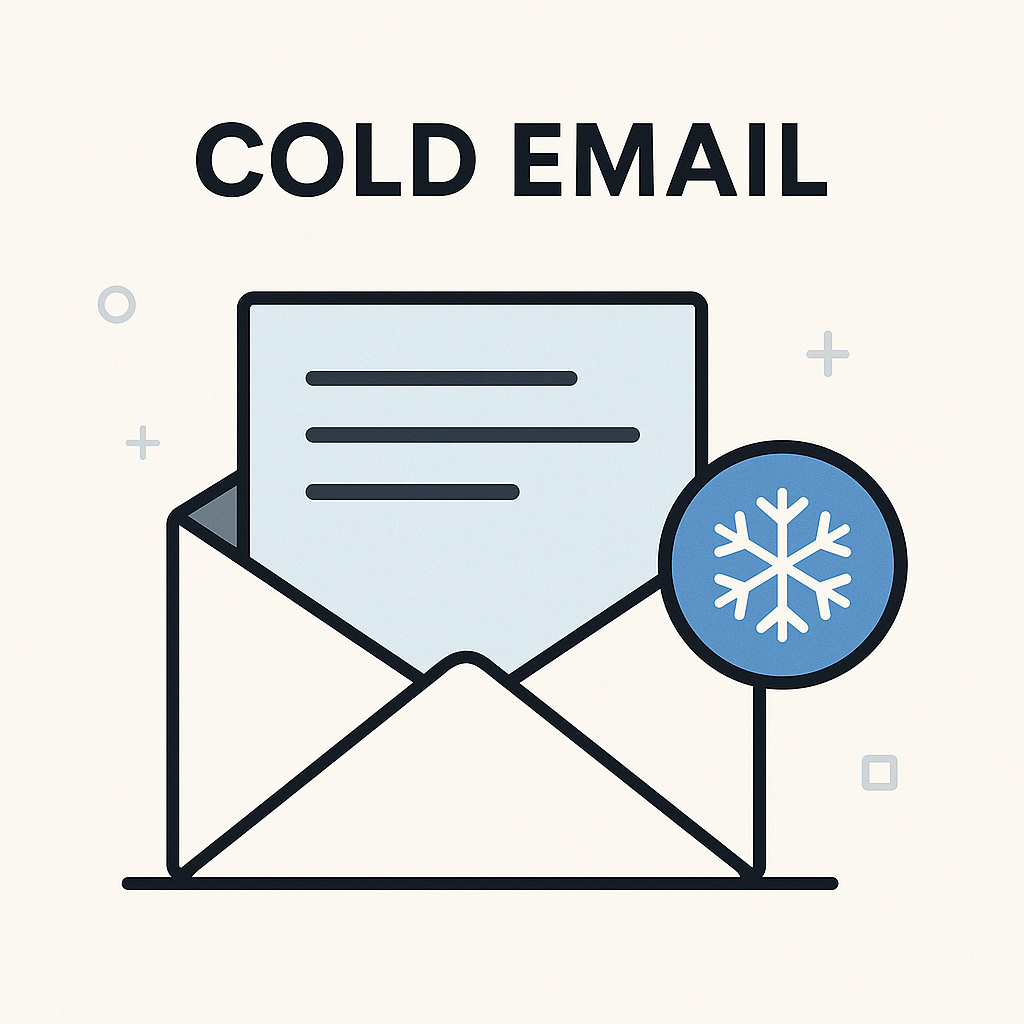Master Cold Email for Business Growth

In today's competitive business landscape, connecting with potential clients and opening new doors for growth can feel like navigating a maze. While many strategies exist, one often-underestimated powerhouse remains incredibly effective when executed correctly: the cold email. It's not just about sending unsolicited messages; it's a strategic tool for lead generation, building relationships, and ultimately, driving revenue. However, far too many professionals approach cold emailing with generic, uninspired messages that end up in the spam folder or ignored. This article will guide you through mastering the art of the cold email, transforming your outreach from a shot in the dark into a precision instrument for business expansion.
Understanding the Power of Cold Email for Growth
Cold email is a form of email marketing where sales and business development professionals reach out to prospects with whom they have no prior relationship. Unlike inbound leads who have shown interest, these prospects are "cold" – they haven't actively sought you out. Yet, when done intelligently, cold email can be a remarkably effective channel for initiating conversations, scheduling meetings, and nurturing potential customers.
Consider the alternative: cold calling vs cold email. While cold calling has its place, cold email offers several distinct advantages. It allows recipients to review your message on their own schedule, provides a written record of your outreach, and gives you the space to craft a thoughtful, value-driven message. Furthermore, research suggests that cold email can yield impressive results. For instance, some studies indicate that well-crafted cold emails can achieve response rates of 10% or even higher, a figure that can significantly impact your pipeline and revenue growth.
The true power of cold email lies in its ability to:
- Expand Market Reach: Connect with individuals and companies you might not otherwise have access to.
- Generate Qualified Leads: Identify and engage prospects who fit your Ideal Customer Profile (ICP).
- Build Brand Awareness: Introduce your company and its value proposition to a new audience.
- Drive Revenue: Ultimately, convert prospects into paying customers.
However, this power is only unleashed through meticulous strategy and execution. The common pitfalls – generic messaging, poor targeting, or a lack of clear value – must be avoided at all costs.
Identifying and Researching Your Ideal Prospect
The foundation of successful cold email outreach is knowing exactly who you're trying to reach. Sending emails to the wrong people is the fastest way to waste resources and damage your sender reputation. This means defining your Ideal Customer Profile (ICP) and developing detailed buyer personas.
Your ICP is a description of the type of company that would get the most value from your product or service and, in turn, provide the most value to your business. Key characteristics might include:
- Industry
- Company size (revenue, employee count)
- Geographic location
- Technological stack
- Specific business challenges
Once you have your ICP, you can identify specific individuals within those companies who are the most likely decision-makers or influencers. These are your buyer personas. For each persona, consider:
- Their job title and responsibilities
- Their daily challenges and pain points
- Their goals and motivations
- Where they get their information (blogs, publications, social media)
- Their preferred communication channels
Research is Non-Negotiable
Effective email outreach demands thorough research. Before sending a single email, dive deep into your prospect's company and individual profile. Leverage resources like:
- LinkedIn: Review their profile, recent activity, connections, and shared interests.
- Company Website: Look for "About Us" pages, press releases, blog posts, and case studies.
- Industry News: See if there are any recent developments, challenges, or successes related to their company or industry.
- Crunchbase/AngelList: For funding rounds, acquisitions, or growth stages.
The more you understand your prospect's world, the more relevant and compelling your email will be. This research directly informs your personalization strategy, making your message resonate far more effectively than any generic template.
Crafting a Compelling Cold Email Subject Line
The subject line is the gatekeeper to your message. In a crowded inbox, yours needs to stand out and entice the recipient to click. A poorly crafted subject line can doom even the most brilliant email body. Here are key principles for creating subject lines that get noticed:
- Be Clear and Concise: Get straight to the point. Many people scan emails on mobile devices, so brevity is crucial. Aim for 5-7 words.
- Personalize: Including the recipient's company name, industry, or a specific point of reference can significantly boost open rates.
- Spark Curiosity: Pose a question or hint at a valuable insight without giving everything away.
- Highlight Value: Briefly mention a benefit or solution your email offers.
- Create Urgency (Use Sparingly): Phrases like "quick question" or "time-sensitive" can work, but overuse can seem pushy.
- Avoid Spam Triggers: Steer clear of excessive capitalization, exclamation points, and overly salesy language (e.g., "FREE MONEY NOW!!!").
Examples of Effective Subject Lines:
- "Quick question about [Company Name]'s [Specific Area, e.g., Customer Support]"
- "[Mutual Connection] suggested I reach out"
- "Idea for improving [Company Name]'s [Specific Goal, e.g., Lead Conversion]"
- "Your thoughts on [Industry Trend]?"
- "Streamlining [Pain Point] for [Company Name]"
Experimentation is key. A/B test different subject lines to see what resonates best with your target audience. Remember, the goal is to earn the click.
Structuring Your Cold Email for Maximum Impact
Once your subject line has done its job, the email body must deliver on the promise. A well-structured cold email is concise, value-driven, and guides the reader towards a desired action. Think of it as a mini-sales pitch that respects the recipient's time.
Here’s a proven structure for effective sales emails:
- Opening Hook (Personalized Connection):
Start with a personalized observation or compliment based on your research. This shows you've done your homework and aren't sending a mass blast. * *Example:* "I noticed your recent article on [topic] – particularly insightful was your point about [specific detail]." * *Example:* "Congratulations on [Company Name]'s recent funding round; it's exciting to see your growth in the [industry] space."
- Identify a Pain Point or Opportunity:
Transition from your observation to a relevant challenge or opportunity your prospect likely faces. * *Example:* "Many companies in the [industry] space struggle with scaling their customer onboarding process efficiently as they grow." * *Example:* "Given your focus on [specific goal], I imagine optimizing [process] is a key priority."
- Introduce Your Solution (Value Proposition):
Briefly explain how your product or service addresses the pain point or helps seize the opportunity. Focus on the benefit to them, not just features. * *Example:* "Our platform helps companies like yours automate their onboarding, reducing setup time by up to 40% and improving customer retention." * *Example:* "We specialize in helping [job title] streamline [process], allowing them to focus more on strategic initiatives."
- Provide Social Proof or Credibility (Optional but Recommended):
A brief mention of successful clients or a relevant statistic can build trust. * *Example:* "We've helped companies like [Similar Company A] and [Similar Company B] achieve significant improvements in [metric]." * *Example:* "Our clients typically see a [X]% increase in [desired outcome] within the first quarter."
- Clear Call to Action (CTA):
Tell the recipient exactly what you want them to do next. Make it easy and low-commitment. (More on this in the next section).
- Professional Closing:
A simple "Best regards" or "Sincerely," followed by your name, title, company, and contact information.
Keep paragraphs short and use white space effectively. Your goal is to be easily scannable and digestible. If you find yourself writing more than a few short paragraphs, consider if you can convey the same message more concisely.
Personalization Strategies: Beyond Just a Name
In the realm of cold email, personalization is not a luxury; it's a necessity. Simply inserting a prospect's name is the bare minimum and often feels inauthentic. True personalization demonstrates that you've invested time in understanding their specific context, challenges, and goals. This is where you differentiate yourself from mass email campaigns and significantly increase your chances of getting a response.
Moving beyond "Hi [First Name]" involves several deeper levels of personalization:
- Company-Specific Insights:
- Reference a recent company announcement (funding, new product launch, partnership).
- Mention a specific piece of content they published (blog post, whitepaper, webinar).
- Comment on their presence in industry news or awards.
- Role-Specific Relevance:
- Address their specific responsibilities and challenges related to their job title.
- Show you understand the pressures and objectives of their role.
- Pain Point Alignment:
- Connect your offering directly to a problem you've identified they might be facing.
- Demonstrate empathy and understanding of their industry's common struggles.
- Shared Connections or Experiences:
- Mention a mutual connection (with their permission, of course).
- Reference a conference you both attended or a shared alma mater.
Scaling Personalization: The Art and Science
Manually researching and personalizing every single email can be time-consuming. This is where technology can help. By integrating your CRM data with sales engagement platforms, you can manage prospect information more effectively. Furthermore, leveraging tools that can pull relevant data points can help automate some aspects of personalization. For those looking to optimize their outreach and drive better results, exploring strategies for effective lead generation email campaigns can provide a significant competitive edge.
The key is to find the right balance between automation and genuine human touch. While tools can help gather information, the final message should always feel authentic and tailored.
The Art of the Call to Action in Cold Emails
Every cold email should have a clear, singular goal, and your Call to Action (CTA) is how you guide the recipient towards achieving that goal. A weak or ambiguous CTA will lead to inaction, while a strong, specific CTA significantly increases the likelihood of a positive response.
What makes a great CTA?
- Clarity: The recipient should know exactly what you want them to do.
- Specificity: Avoid vague requests. Instead of "Let me know your thoughts," try something more defined.
- Low Friction: Make it easy for them to say "yes." A request for a 15-minute call is often easier to agree to than an hour-long demo.
- Relevance: Ensure the CTA aligns with the value you've presented in the email.
Effective CTA Examples:
- "Would you be open to a brief 15-minute call next week to discuss how we might help you [achieve specific benefit]?"
- "If this sounds like something that could be valuable, what's the best time for a quick chat early next week?"
- "Would you be interested in receiving our case study on how [similar company] achieved [result]?"
- "What is the best email address to reach the person responsible for [specific area] at [Company Name]?"
- "Reply to this email if you're interested in learning more."
Avoid asking for too much too soon. The primary goal of a first cold email is often to secure a brief conversation, not to close a deal. Make your CTA a logical next step that allows you to further qualify the lead and build rapport.
Follow-Up Strategies That Don't Annoy
Many sales professionals make the mistake of sending one email and then giving up. However, research consistently shows that follow-up emails are crucial for conversion. The majority of sales are closed after multiple touchpoints. The challenge lies in following up effectively without becoming a nuisance.
Here’s how to master your follow-up game:
- Establish a Cadence: A common and effective cadence involves 3-5 follow-up emails spread over 1-2 weeks. Space them out appropriately (e.g., 2-3 days between emails).
- Add Value with Each Touchpoint: Don't just resend your previous email or ask "Did you see my last email?". Instead, offer new information, a different angle, a relevant article, or a quick tip. This reinforces your value and keeps the conversation moving.
- Keep Them Short and Punchy: Follow-ups should be even more concise than your initial email. Respect their time and make it easy to scan.
- Vary Your Approach: Consider different types of follow-ups:
- The "Breakup" Email: If you haven't received a response after several attempts, send a polite email stating you'll stop reaching out unless they indicate otherwise. This can sometimes prompt a response.
- The "P.S." Follow-up: Add a brief, new piece of information or a question at the end of your original email.
- The "Share a Resource" Follow-up: Forward a relevant blog post, industry report, or case study that directly relates to their potential needs.
- Track Your Efforts: Use your CRM or sales engagement tools to track when you sent emails and when you last followed up. This helps maintain organization and ensures you don't drop the ball. Improving your overall email productivity is key to consistent follow-up.
Remember, the goal of a follow-up is to re-engage the prospect and move them closer to a conversation. By providing consistent value and respecting their inbox, you can build rapport and significantly improve your conversion rates.
Leveraging AI for Smarter Cold Email Campaigns
In the modern business environment, efficiency and intelligence are paramount. This is where AI email tools are revolutionizing how professionals approach cold email campaigns. Artificial intelligence can automate tedious tasks, enhance personalization at scale, and provide insights that drive better decision-making, ultimately boosting your email productivity.
Here’s how AI can elevate your cold email strategy:
- Automated Prospect Research: AI tools can sift through vast amounts of data to identify potential leads matching your ICP, gathering key information like company size, industry, recent news, and contact details.
- AI-Powered Copywriting: Tools can assist in drafting subject lines, email bodies, and CTAs, offering suggestions based on best practices and historical data. Some AI can even adapt the tone and style to better match your brand or the recipient. This is particularly useful for generating initial drafts or overcoming writer's block.
- Hyper-Personalization at Scale: AI can analyze prospect data and automatically insert relevant personalized snippets into your email templates, making each message feel unique without requiring manual intervention for every single email. This is a game-changer for scaling your outreach efforts effectively.
- Predictive Analytics: AI can analyze email performance data to predict which prospects are most likely to respond or convert, allowing you to focus your efforts more strategically.
- A/B Testing and Optimization: AI can facilitate continuous A/B testing of different subject lines, email copy, and CTAs, automatically identifying what works best for your audience and optimizing campaigns for higher engagement.
- Inbox Management and Prioritization: For professionals managing high volumes of communication, AI can help sort, prioritize, and even draft responses to incoming emails, ensuring critical messages aren't missed.
For professionals aiming to supercharge their email outreach and enhance overall email productivity, integrating intelligent tools is key. Tools like an ai executive assistant can significantly streamline workflows, from managing complex inboxes to drafting personalized communications. Platforms like MailToPie offer advanced features to help users craft more effective sales emails and manage their communication efficiently, ensuring you spend less time on manual tasks and more time on strategic engagement. Embracing email artificial intelligence is no longer a futuristic concept but a present-day necessity for staying competitive.
By harnessing the capabilities of AI, you can transform your cold email process from a manual grind into a sophisticated, data-driven engine for business growth.
Conclusion
Mastering the art of cold email is a critical skill for any business looking to drive growth, generate leads, and increase revenue. It’s a powerful tool that, when wielded with precision and strategy, can open doors to invaluable new opportunities. By focusing on understanding your ideal prospect, crafting compelling subject lines, structuring your messages for maximum impact, personalizing your outreach beyond just a name, and implementing effective follow-up strategies, you can dramatically improve your success rates.
Furthermore, embracing the advancements in AI email tools can amplify your efforts, allowing for greater efficiency, deeper personalization, and smarter campaign optimization. Tools that enhance email productivity and offer intelligent solutions are invaluable assets in today's fast-paced business world.
Don't let generic, ignored emails hold your business back. Start implementing these intelligent cold email tactics today, and watch your outreach transform into a reliable engine for sustainable business growth.
```


